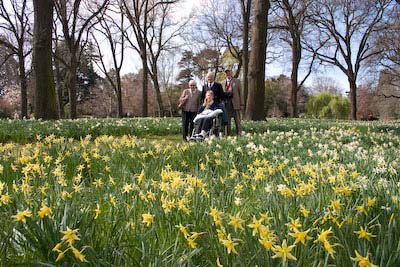Challenged by a poster at the NZ CSC site [item posted 30/10/06] to take me up on my offer to allow him to have guest post in Ringworld (made in that thread on Sept 29th) to "explain, on his blog, why he [Gareth] is wrong", Ken Ring replied with this astonishing little paragraph:
"He is wrong to single me out and not post up the Metservice's long range predictions as well, which is the true comparison. And in not being as vitriolic towards them for the same mistake factor and putting up a similar blog ridiculing them. He is wrong if he thinks longrange weather is a true science and can be analysed statistically, when it is a science of trends and opinions. In pretending to quantify it he is conducting a witchhunt. He is wrong to do that in a culture that allows alternative opinions. He is wrong to assume that because I make a living at something he finds disagreeable, then he is entitled to publicly undermine me."
Let's deal with his points one by one.
"He is wrong to single me out and not post up the Metservice's long range predictions as well, which is the true comparison."
It would be the correct comparison to make, if New Zealand's MetService made long range predictions. They don't. Why is that? Because they know that they don't have the tools to make meaningful predictions. NIWA, on the other hand, do make "seasonal" predictions - as does Tony Trewinnard at Blue Skies Weather - but these are attempts to put the NZ weather into an El Nino/La Nina context, expressed as (usually cautious) probability statements over the next few months. They are not in any sense detailed forecasts of expected weather events.
"And in not being as vitriolic towards them for the same mistake factor and putting up a similar blog ridiculing them."
Why would I criticise them for not doing something they never claim to do?
"He is wrong if he thinks long range weather is a true science and can be analysed statistically, when it is a science of trends and opinions."
Now we get to the nub of the issue. Ken admits that long range weather is not a "true science", and suggests that it can't be analysed statistically. While the former is certainly correct, the latter is demonstrably not. He makes, and publishes a long and detailed book containing, daily forecasts for the whole of New Zealand, including severe weather warnings, sunshine and rainfall statistics, even surf forecasts ("new for 2007"). Those forecasts can be tested against what actually happens, and we can therefore get a measure of how useful Ken's forecasts are for the buyers of his book. My analysis suggests that the "lunar method" produces forecasts that have very little "skill" - a view supported by Jim Renwick and Erick Brenstrum's separate analyses below. Think of it as a book review, where instead of criticising Ken's prose style (bombastic), we test his predictions. It's exactly analogous to a motoring magazine testing a car manufacturer's claimed performance figures. I don't know what a science of "trends and opinions" might be, but I suspect I might think it New Age nonsense.
"In pretending to quantify it he is conducting a witch hunt."
There's no pretence to my figures: they're published and downloadable. Anyone with internet access, a copy of Ken's book and a decent spreadsheet programme could do it. And is Ringworld a "witchhunt"? This is something of a meme with Ring. Earlier this month, he accused me being a Nazi and being spiteful. I view Ringworld as more of a consumer service. People who buy Ken Ring's weather "almanac" have a right to know whether his method works. And I have a right to point out that it doesn't.
"He is wrong to do that in a culture that allows alternative opinions."
I'm not stopping Ken from publishing his predictions, or promoting them. He can hold whatever opinions he likes, and publish whatever he likes, but he must not make claims that he cannot support with evidence, or that cannot be supported when tested. That's a matter of law. To let Ken get away with saying whatever he likes would be like allowing Ford to claim that their largest SUV has excellent fuel economy, when it clearly doesn't.
"He is wrong to assume that because I make a living at something he finds disagreeable, then he is entitled to publicly undermine me."
Ken is wrong to assume that he has the right to promote and sell a book claiming to offer accurate long range weather forecasts, when those forecasts are not as accurate as he claims. He cannot be above the law, even if his method is beyond science.


.jpg)


